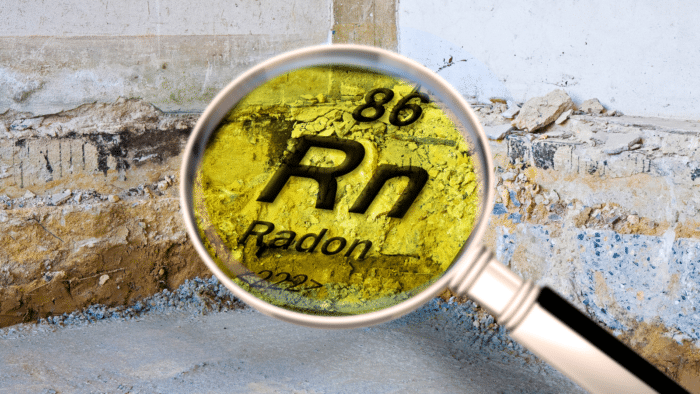Biggest Safety Issue
When it is time to buy a new home and request a home inspection, the biggest safety issue may not be the uneven sidewalk or termite damage. It may be radon.
Radon is a natural element. The colorless, odorless, tasteless, radioactive gas is formed when uranium decays in soil, rock, and water. The gas rises and is drawn into buildings through cracks and other openings, such as floor drains, sump pits, crawl spaces, foundation cracks, and gaps around pipes and wires. When inhaled, the gas can damage cells leading to lung cancer. It may take years of exposure for the cancer to develop, and smokers are especially vulnerable to developing lung cancer.
The United States Environmental Protection Agency recommends all homes be tested at least every two years for radon gas and estimates that 21,000 deaths per year occur from radon-induced lung cancer. This makes radon the leading cause of lung cancer after smoking.
Radon Levels Should be Consider
Because of the health risks associated with radon, testing and disclosure of radon levels should be considered when buying a home, completing home renovations, and every two years. Since January 1, 2008, Illinois passed the Radon Awareness Act, requiring all sellers of residential buildings to disclose information about indoor radon exposure, but it does not require remediation unless the level is 4.0 picocuries per liter (pCi/L) of air or higher. The average measurement is 1.3 pCi/L in American homes, although no level is safe.
Consult With Your Realtor
Forty-one percent of homes in Illinois have radon levels higher than 4.0 pCi/L. If the home you are buying or selling has high levels of radon, consult with your Realtor about your options. Installing a radon system will lower levels to under the action level (4.0). The most common radon reduction systems involve the installation of a vent pipe and fan system that draws the air from underneath a building and displaces it outside costing between $800 and $1,200.
Effective June 1, 2013, Illinois required all new construction single-family homes or dwellings containing two or fewer apartments, condos, or townhouses to have a passive radon pipe installed by the contractor or subcontractor. If the homeowner chooses to activate the system, it must be done by an Illinois Emergency Management Agency (IEMA) licensed Radon Mitigation contractor. The company that performs the test or your Realtor can provide you with a list of these professionals.
Specialized Tests You Can Request
While anyone can test for radon with a test kit from a hardware or big box retailer, in Illinois, only a licensed technician can use a continuous radon monitor for a certified test. This test shows hour-by-hour levels and the technician is trained in closed building conditions, monitoring weather conditions, and has experience in reading radon reports for validity. When you schedule your home inspection, the Radon Test is one of the specialized tests you can request.
Even if you are not planning on selling anytime soon, if you’re reading this blog and have not had a radon test in the past two years, go to https://www.illinois.gov/services/service.radon-licensed.html and find licensed radon measurement and remediation companies near you. If you are unsure if your home has a radon mitigation system, look in the basement for a pipe labeled RADON on the floor of your basement.





